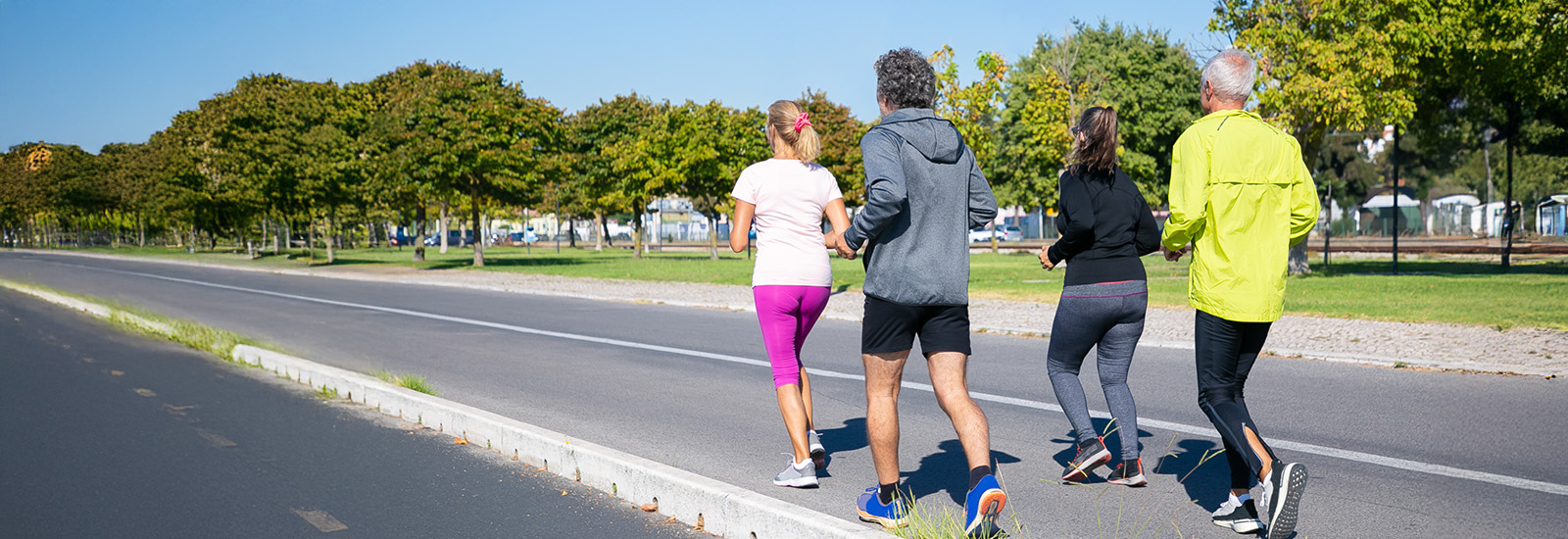
Benefits of physical activity while on GLP-1s
If you’re on a GLP-1 diet plan for weight loss, incorporating the right types of physical activity can boost your results, enhance your overall health, and help with stress and sleep. Here’s a guide to help you choose the best exercises and build a routine that works for you.
Low-Impact Exercise
Low-impact exercises are an excellent choice for people on a GLP-1 diet plan. These activities are gentle on the joints while still providing great benefits for digestion and energy levels.
- Walking: A brisk walk can help you stay active without overexerting yourself. It’s easy to fit into your daily routine, whether it’s a stroll around your neighborhood or a hike on a local trail.
- Swimming: This full-body workout is not only fun but also improves cardiovascular health and tones muscles. Swimming is particularly good if you experience joint discomfort.
- Cycling: Whether you’re riding a stationary bike or cycling outdoors, this activity is great for building leg strength and endurance.
How much? Aim for 150 minutes of moderate-intensity activity per week. That’s about 30 minutes a day, five days a week. You can break it into smaller sessions if needed, such as two 15-minute walks.
Post-Meal Movement
After eating, light activity can help with digestion and reduce bloating.
- 10–15 Minute Walks: A short, relaxed walk after meals can aid in digestion by helping food move through your system. It’s a simple and effective way to feel better after eating.
This habit can also improve blood sugar regulation, making it especially beneficial for those managing
weight or metabolic conditions.
Strength Training
Maintaining muscle mass is important while losing weight, and strength training is the best way to
achieve that.
- Bodyweight Exercises: Push-ups, squats, lunges, and planks can be done at home without any equipment.
- Resistance Bands: These are affordable, portable, and versatile for building strength in various muscle groups.
- Weightlifting: Using free weights or gym machines helps target specific muscles and build strength effectively.
How much? Include strength training 2–3 days per week. Focus on all major muscle groups, allowing at
least one day of rest between sessions.
Social Exercise for Mental Health
Engaging in physical activities with friends, family, or a local group can add a layer of fun and accountability to your routine. Social exercise not only motivates you to stay consistent but also supports mental health. Activities like group yoga, cycling clubs, or walking with a loved one can help reduce feelings of isolation and improve overall mood. Sharing these moments with others can make your fitness journey more enjoyable and rewarding.
Stress Reduction and Better Sleep
Exercise isn’t just about physical health—it can also improve mental well-being. Activities like yoga or tai chi combine movement with mindfulness, helping to reduce stress and improve sleep quality. Even low- impact exercises like walking outdoors can lower cortisol levels and boost mood.
In short, Incorporating regular physical activity into your GLP-1 diet plan can enhance your weight loss results, improve digestion, and boost your overall well-being. Choose a mix of low-impact cardio, post-meal movement, and strength training to create a balanced routine. As a bonus, these activities can help you manage stress and get better sleep—two key factors in achieving long-term success. Start small, stay consistent, and enjoy the journey to a healthier you!
If you’re interested in learning more about a GLP-1 program with UBI Telehealth, please click here.



